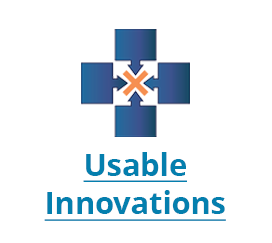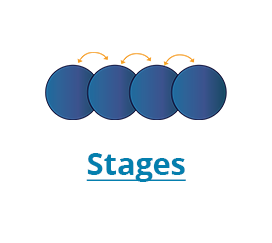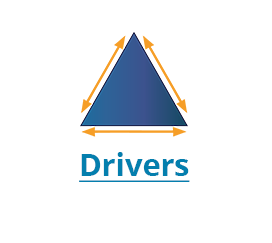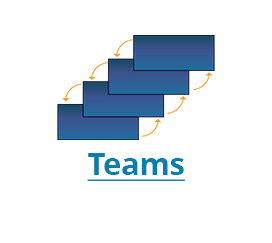Start Here
Active Implementation Learner Pathways
Learning pathways in implementation science serve as structured routes for individuals to effectively acquire the necessary knowledge, skills, and competencies to translate evidence-based interventions into real-world settings.
Activity: Getting started with Improvement Cycles
Review these diagrams and consider the following questions. We encourage you to review and discuss these with your team and/or to write down your responses.
Handout: Improvement Cycles One-Pager
Implementation Teams employ Improvement Cycles in order to intentionally identify problems and solutions. Underlying the different types of Improvement Cycles described in this active implementation framework is the Plan, Do, Study, Act Cycle or PDSA Cycle.
Improvement Cycles Overview (Module 5)
Formally known as “modules” on the AI Hub, we have condensed the information into document overviews. As you begin your journey of implementation, take a moment to read and learn more about improvement cycles (PDSA).
Tool: PDSA Planning Template
Plan-Do-Study-Act (PDSA) Cycles are used for rapid cycle problem solving in active implementation. Use of this PDSA Planning Template will help ensure there is clear communication, the plan is enacted, you begin to collect data to study, and you act on what was learned.
Dive Deeper: Read
Brief: Leading by Doing: A Practice-Based Approach to Improving Mathematics Outcomes
Using a practice-based approach to improving mathematics outcomes, the Kentucky Department of Education (KDE) facilitated a continuous improvement process led by teachers and educators to improve mathematics outcomes for all students. This brief focuses on Madison County School District, highlighting how Madison's administration, teachers, and instructional coaches worked together to enhance instructional practices and improve mathematics outcomes.
Brief: SISEP Technical Assistance: Universal TA
SISEP uses an differentiated three-tiered approach to support states in developing an infrastructure for implementing and scaling evidence-based practices, including universal, targeted, and intensive Technical Assistance (TA). This brief describes SISEP’s approach to Universal TA and dissemination practices that make it a critical component of SISEP’s tiered TA approach.
Four Domains for Rapid School Improvement: An Implementation Framework
NIRN and the National Center for School Turnaround (2018) published the Four Domains for Rapid School Improvement: An Implementation Framework as a companion to the Center for School Turnaround’s (2017) recent publication of The Four Domains for Rapid School Improvement: A Systems Framework. The aim of this companion paper is to describe how to use the improvement domains in practice.
Handout: Improvement Cycles One-Pager
Implementation Teams employ Improvement Cycles in order to intentionally identify problems and solutions. Underlying the different types of Improvement Cycles described in this active implementation framework is the Plan, Do, Study, Act Cycle or PDSA Cycle.
Handout: PDSA – Case Example
PDSA Planning Template example that demonstrates the PDSA process through 5 completed improvement cycles.
Improvement Cycles Overview (Module 5)
Formally known as “modules” on the AI Hub, we have condensed the information into document overviews. As you begin your journey of implementation, take a moment to read and learn more about improvement cycles (PDSA).
Integrating Improvement and Implementation Sciences to Enhance Educational Outcomes
This brief highlights similarities and differences between implementation science and improvement science, as well as how they can be used together to support programs and practices aiming to improve outcomes.
Dive Deeper: Watch
Implementation & Improvement Science Overview Webinar
This webinar provides an overview of the commonalities and differences between Implementation Science and Improvement Science.
Voices from the Field Video Series (Improvement Cycles)
Voices from the Field Video Series: Improvement Cycles
Dive Deeper: Listen
Dive Deeper: Reflect
Activity: Apply the Plan-Do-Study-Act (PDSA) Cycle in your work
The purpose of this activity is to provide you and/or your Team with the space to discuss and reflect on the components of the Plan-Do-Study-Act Cycle (PDSA) and apply it to your work.
Activity: Getting “Ready” for Change
Readiness is defined as a developmental point at which a person, organization, or system has the capacity and willingness to engage in a particular activity. Use this activity to explore aspects of readiness and change with your Team.
Activity: Getting started with Improvement Cycles
Review these diagrams and consider the following questions. We encourage you to review and discuss these with your team and/or to write down your responses.
Activity: PDSA – Who Am I?
Implementation Teams use PDSA Cycles to help them make meaningful changes, alleviate barriers, and achieve expected outcomes. This activity is designed to help you understand your PDSA strengths, recognize strengths in others, and identify potential team gaps.
Activity: Transformation Zone Elevator Speech
Review Improvement Cycles Overview - Topic 4: Transformation Zones. Then create a 2–3-minute elevator speech for leadership in your organization explaining the difference between a “pilot” and a “transformation zone.”
Activity: Usable Innovations and PDSA Case Example
This case provides an example of an approach to establishing Usable Innovations. Review the case example, then go through the discussion questions yourself, or with your team.
Apply
Conducting Improvement Cycles Interactive Lesson
After completing this lesson, you will be able to guide Implementation Teams through iterative improvement cycles using data analysis, decision-making strategies, and structured processes to enhance program implementation.
Lesson: The PDSA Cycle
This interactive lesson describes how to employ and document the key components in each Plan-Do-Study- Act (PDSA) Cycle phase and identify the importance of utilizing iterative PDSA cycles.
Tool: PDSA Planning Template
Plan-Do-Study-Act (PDSA) Cycles are used for rapid cycle problem solving in active implementation. Use of this PDSA Planning Template will help ensure there is clear communication, the plan is enacted, you begin to collect data to study, and you act on what was learned.






